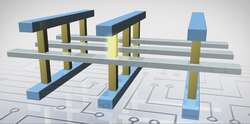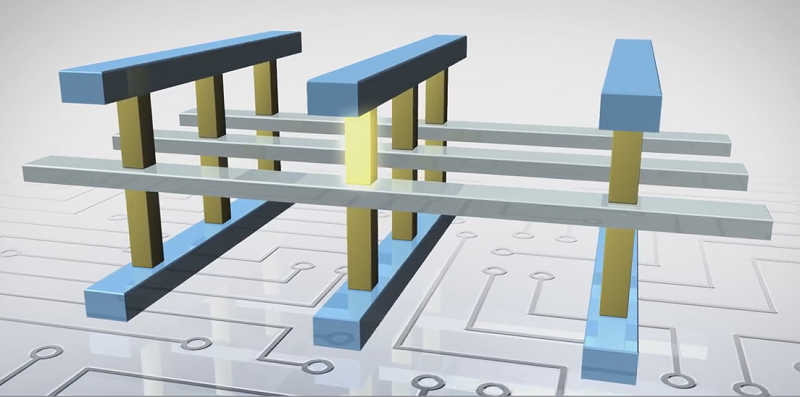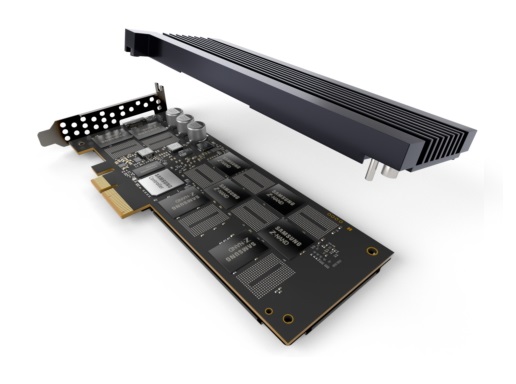
Aug. 12, 2016
By: Michael Feldman
The prospects for significantly faster solid-state storage for servers got a big boost this past week with Micron’s introduction of its QuantX-branded 3D XPoint memory-based SSDs and Samsung’s preview of its upcoming Z-SSD devices. According to the companies, their respective products will deliver much better performance than conventional NAND-based PCIe SSDs currently used in the datacenter. The announcements were made at the Flash Memory Summit, a three-day extravaganza of all things non-volatile.
Both QuantX and Z-SSD are positioned to compete against Intel’s Optane products, all of which are designed to provide non-volatile storage devices that can occupy an intermediate spot between fast, but costly DRAM and slower, less much less expensive NAND flash. Such technologies are destined for datacenters in application areas such as data analytics, OLTP, content management and distribution, and high performance computing.
The rationale here is that QuantX, Optane, and Z-NAND will offer solid-state storage in servers at prices and densities that approach those of high-end NAND, but at speeds and levels of resiliency that are closer to those of conventional DRAM. Initially, these products will be used to create super-fast SSD devices for “hot” data inside servers, but further down the road, they could be employed as non-volatile DIMMs (NVDIMMs) to plug directly into a computer’s memory slots.
Setting aside Z-NAND for a moment, Micron’s plans for 3D XPoint is significant in that it provides a much-needed second source for products based on this technology. The development was widely anticipated, given that 3D XPoint was jointly developed by Intel and Micron. When the technology was announced in 2015, the two companies characterized it as “the first new memory category since the introduction of NAND flash in 1989.” Shortly after that announcement, Intel let it be known that it would soon be offering SSDs based on the technology under the Optane brand, with Facebook as one of its early potential customers.
However, neither Micron nor Intel has provided much detail on the nature of 3D XPoint. What has been revealed is that it’s a transistor-less architecture that uses a three-dimensional array of single-bit memory cells than can be addressed individually. The bit addressability is key to its speed and efficiency. NAND, for example, is only block addressable, so reading and writing small chunks of data is relatively costly in terms of time and energy. Nonetheless, the specific composition of the 3D XPoint material remains a mystery, although some have speculated that it’s a type of phase change memory, a characterization that at least Intel has denied.
 3D XPoint Simulation from Micron Technology
3D XPoint Simulation from Micron Technology
Regardless, the specs are certainly impressive. 3D XPoint technology to be 10 times denser than conventional DRAM, which is helped along by the fact that the memory cells can be stacked into layers, analogous to the way 3D NAND chips are built today. The first 3D XPoint implementation uses a two-layer configuration and 20nm lithography to hold 128 gigabits (16 GB) per die. More layers and smaller geometries are anticipated in later renditions, allowing for even higher capacities.
Form a performance perspective, 3D XPoint is said to be 1,000 times faster and more resilient than NAND. However, it’s not a universal memory in the sense that it can directly replace either DRAM or NAND. For one thing, the devices are anticipated to be four or five times as expensive per bit as NAND-based SSDs. Further, while performance is great for a non-volatile memory, 3D XPoint is still slower than DRAM, probably 5 to 10 times slower. And for applications that are sensitive to memory latency – and in the datacenter, most are to some degree or another -- this matters lot.
Also, by the time 3D XPoint gets integrated into drives, those die-level performance advantages become much more muted. For example, Micron’s QuantX prototype SSD, is about 10 times faster than current NAND-based NVMe SSD, which is a far cry from the 1,000-fold advantage seen at the chip level. When Micron and Intel get around to build NVDIMMs with this technology, much more of the underlying performance of 3D XPoint will be captured.
The QuantX prototype does writes in about 20 microseconds and reads in about 10 microseconds, and delivers IOPS between 900K and 1.8M per drive, depending upon the number of PCIe links. At the Flash Memory Summit, Micron demonstrated capacities between 200 to 1,600 GB, but gave little indication at what these drives might cost when they become commercially available.
Turning to Samsung’s Z-NAND-based drive, this a different animal entirely inasmuch as it based on more conventional NAND memory. The initial product, a 1TB Z-SSD is said to delivers a performance profile on par with that of 3D XPoint-based drives, namely 70 percent lower latency than NVMe SSDs. That’s not quite as impressive as what Micron and Intel are promising with their hardware, but it’s significantly better than conventional solid state drives.
 Samsung Z-SSD
Samsung Z-SSD
Where Samsung looks to gain an advantage is cost, although, to be clear, no one in this triad has offered any pricing details on any of these products yet. However, 3D XPoint is based on what is now an exotic technology and manufacturing process, whereas Samsung’s Z-SSDs use Z-NAND, which the company has revealed to be a type of 3D NAND. Although this memory category itself is rather new, it is based on legacy (2D) NAND technology, with a well-established ecosystem of drivers and controllers. In general, 3D NAND has been targeted to the consumer space, but it appears the company has leveraged the technology to build a higher-end PCIe device for the datacenter.
Samsung intend to offer a 1TB Z-SSD later this year, with 2TB and 4TB versions in 2017. Likewise, Intel has said it plans to ship the first Optane devices before the end of 2016. As of this writing, Micron has not offered a timeframe for commercial availability of the QuantX products.
